10 Colors That Really Attract Sharks (And 3 Colors That Make You Invisible To Them)

Ever wondered if the color of your swimsuit might turn you into shark bait? While sharks primarily detect prey through smell and movement, certain colors can actually catch their attention underwater.
Some bright hues mimic the appearance of their favorite snacks, while others blend perfectly with the ocean, making you practically invisible to these predators. Here’s what you need to know before your next ocean swim.
1. Bright Yellow
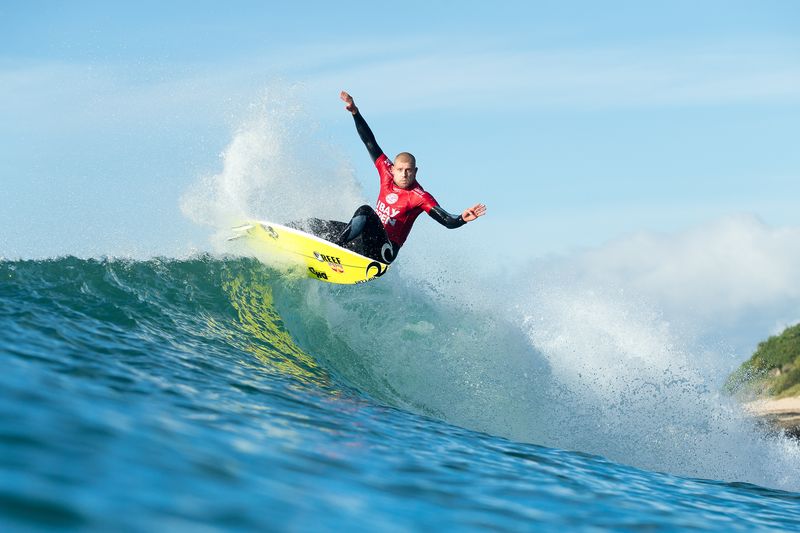
Nicknamed ‘yum yum yellow’ by marine biologists, this sunshine shade acts like a dinner bell for sharks. The vibrant color cuts through water with remarkable clarity.
Sharks can spot yellow from impressive distances, mistaking it for the flash of scales on struggling fish. Next time you’re shopping for ocean gear, maybe reconsider that canary-yellow wetsuit!
2. Bright Orange

Safety orange might keep you visible to rescue teams, but it also makes you impossible for sharks to ignore. The eye-catching hue resembles the coloration of many tropical fish species that sharks regularly hunt.
Marine researchers have found that orange dive equipment consistently attracts more shark attention during tests. Some fishing lures even capitalize on this attraction with orange components.
3. Neon Colors

Those trendy neon swimsuits might as well be flashing ‘all-you-can-eat buffet’ signs to sharks. Hot pink, electric green, and fluorescent yellow all cut through water with unnatural brightness.
Sharks’ eyes are specifically tuned to detect unusual color contrasts. In murky or deep waters, neon colors remain visible when natural colors fade, making them particularly attractive to curious predators.
4. Bright White
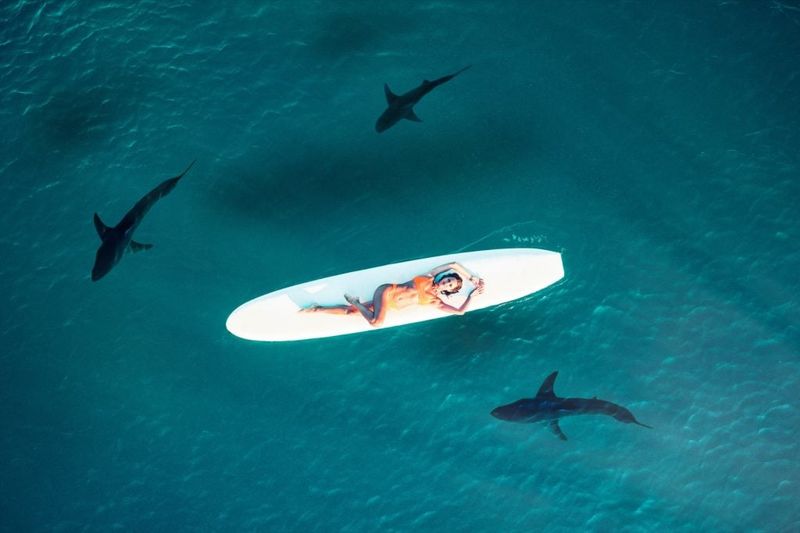
That pristine white bikini might look stunning on the beach, but underwater it screams ‘eat me!’ to passing sharks. White mimics the belly flash of injured fish, triggering a shark’s predatory instincts.
Even in murky conditions, white stands out like a beacon. Many experienced divers avoid white gear entirely when swimming in shark-populated waters.
5. Red (Bright)

Blood in the water? Not quite, but bright red might trigger the same response in sharks. While humans lose the ability to see red at depth, sharks maintain better color vision underwater.
The association with blood makes red particularly problematic. Sharks have evolved to investigate red hues quickly, as they often signal wounded prey – exactly what these efficient predators are programmed to seek.
6. Silver And Chrome
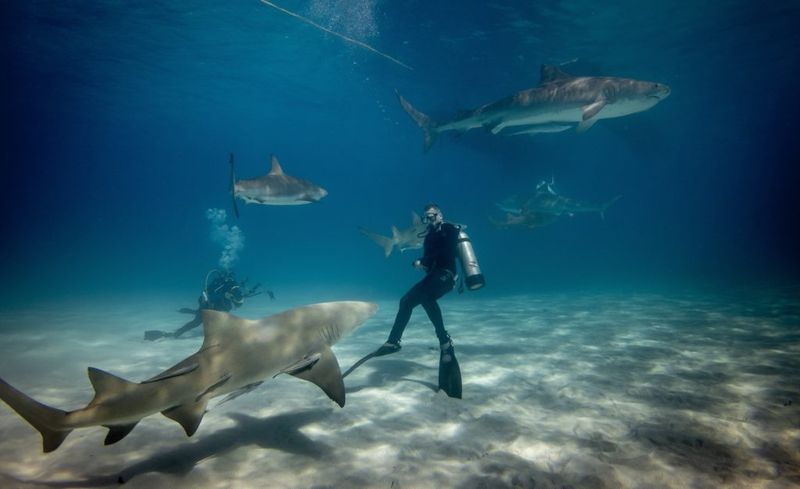
Flashy jewelry and shiny wetsuits create the perfect fish-like glimmer underwater. The reflective quality of silver and chrome mimics the scales of baitfish catching sunlight as they dart through water.
Many shark attacks on surfers involve boards with metallic or reflective elements. Smart divers avoid anything that creates that telltale flash of light that says ‘delicious fish’ to a hunting shark.
7. Bright Blue
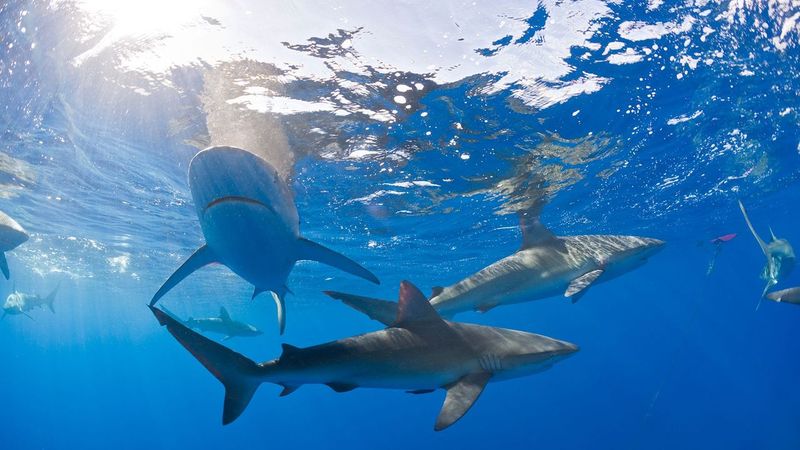
Counterintuitive but true – bright blue stands out dramatically against most ocean backgrounds. Think electric or royal blue rather than navy.
The contrast between vibrant blue and the typically greenish-blue ocean water creates an unnatural boundary that sharks can easily detect. Many tropical fish display bright blue markings, which may explain why sharks show interest in this seemingly ocean-friendly color.
8. Yellow And Black Stripes
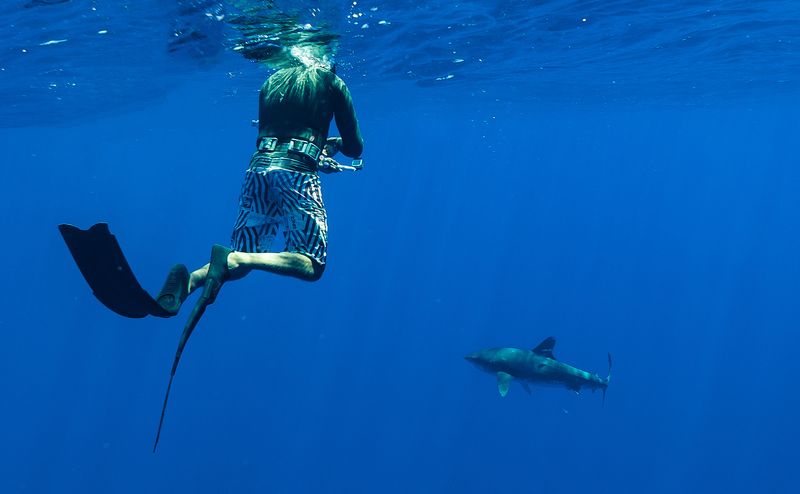
Mother Nature uses this high-contrast pattern as a warning in many species, but underwater it functions more like a dinner invitation for sharks. The sharp visual boundaries between yellow and black create a distinct silhouette.
This pattern resembles certain reef fish that sharks commonly hunt. Divers wearing striped wetsuits report more shark encounters than those in solid colors.
9. Green

Lime green and other bright green shades create unexpected visual pop underwater. While you might think green blends with seaweed, bright versions actually stand out against the deeper blue-green of open water.
Certain baitfish display greenish flanks that flash when they turn. Sharks have learned this visual cue means an easy meal is nearby, making bright green an unfortunate choice for ocean activities.
10. Flesh Tones

Your natural skin tone might be working against you in shark territory. Pale pinks, tans, and light browns can resemble the underbelly of wounded marine mammals – prime shark targets.
This unfortunate similarity explains why sharks sometimes mistake swimmers for seals. Many shark experts recommend covering exposed skin with darkly colored wetsuits when swimming in areas known for shark activity.
11. Dark Blue

Navy and midnight blue create perfect oceanic camouflage. These deep shades match the natural color of open ocean water, helping you blend seamlessly into your surroundings.
Professional divers often choose dark blue equipment specifically for its shark-deterrent properties. The color breaks up your silhouette, making you less conspicuous to predators scanning from below – a clever visual trick borrowed from marine mammals.
12. Black
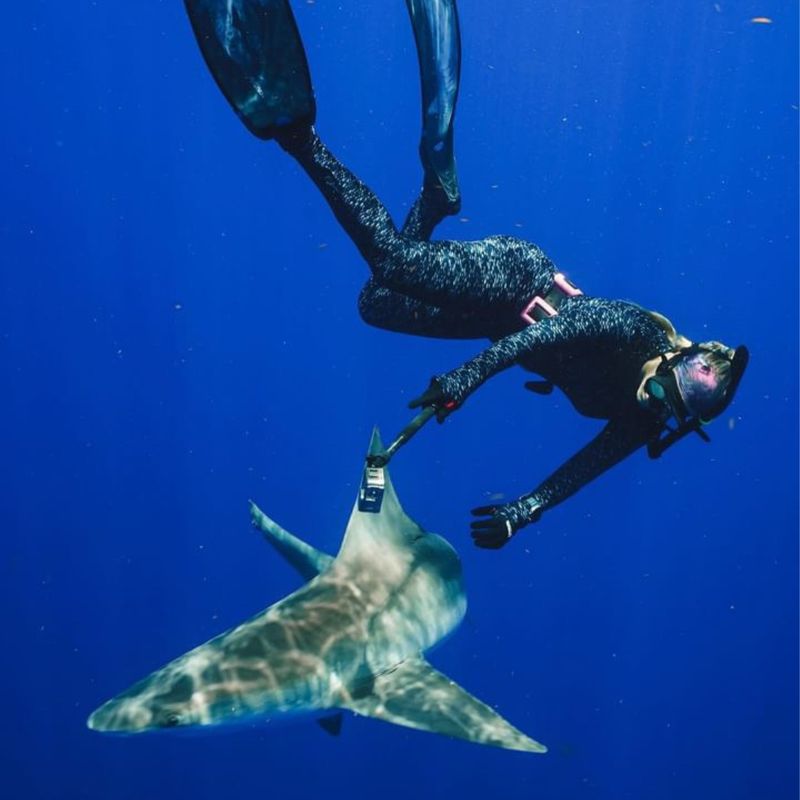
Surprisingly, black might be your best friend in shark-inhabited waters. Rather than standing out, black equipment and swimwear help you disappear against the dark depths.
Sharks hunting from below struggle to distinguish black objects from the dark water above. Many professional divers swear by all-black wetsuits when working in areas with high shark populations, reporting fewer close encounters than colleagues in brighter colors.
13. Gray

Muted gray tones work like underwater invisibility cloaks against sharks. This neutral color mimics rocks, sand, and even the skin of many marine animals that sharks typically ignore.
The dull appearance offers no visual stimulus to trigger a shark’s hunting response. Military naval operations often utilize gray equipment for this very reason – it’s simply the least interesting color to marine predators.






